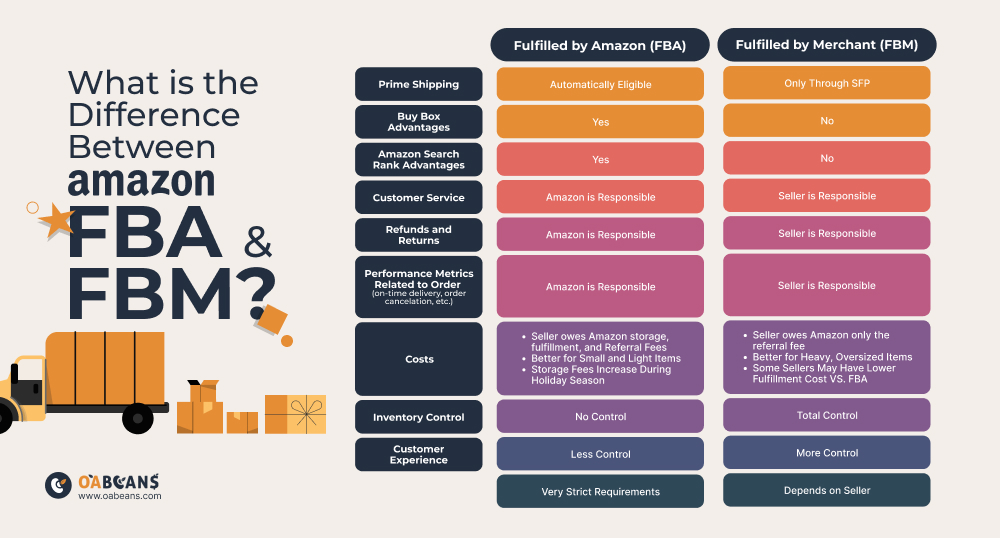Uncover the secrets to boosting your profits on FBA with a detailed breakdown of seller fees. Don’t miss out!
Table of Contents
Hello to Amazon FBA!
We’re going to learn about a cool way people can sell stuff online using Amazon’s FBA program. FBA means ‘Fulfillment by Amazon’, and it’s like having Amazon as your super assistant for selling things. When someone decides to sell things with FBA, they send their items to Amazon, and Amazon takes care of storing, shipping, and helping customers.
What FBA Stands For
FBA means ‘Fulfillment by Amazon’, and it’s like having Amazon as your super assistant for selling things.
How FBA Works
When someone decides to sell things with FBA, they send their items to Amazon, and Amazon takes care of storing, shipping, and helping customers.
Understanding Amazon FBA Fees
When we decide to sell things with Amazon’s FBA program, we need to understand the fees involved to make sure we can make a profit.
Types of FBA Fees
Amazon charges different fees to sellers. For example, there are storage fees for keeping items in Amazon’s warehouses and shipping fees for sending items to customers.
Why Fees Are Important
By knowing and understanding these fees, sellers can calculate how much they will spend on fees and how much they will earn from their sales. This helps them plan better and make sure they are making a profit.
For sellers using the Amazon FBA program, understanding and keeping track of the various fees involved is essential in running a successful and profitable business. By knowing the types of fees and why they are important, sellers can make informed decisions and optimize their selling strategy to maximize their profits. Next, let’s break down the fee structure further to get a clearer picture of how these fees work.
Breaking Down the Fee Jungle
When you decide to sell stuff using Amazon’s FBA program, you’ll come across different fees that can affect how much money you make. Let’s take a closer look at these fees and understand what each one is for.

Image courtesy of marketgap.pro via Google Images
Listing Fees
First up, when you list your items for sale on Amazon, there’s a small fee for each item you put up. This fee helps cover the cost of displaying your products to potential buyers.
Handling Fees
Once someone buys one of your items, Amazon steps in to pick and pack it for shipping. This service comes with a handling fee, ensuring that your customer receives their order promptly and safely.
Storage Fees
Amazon operates massive warehouses where they store your inventory until it’s sold. To keep your items safe and ready for shipping, there’s a storage fee associated with using Amazon’s storage facilities.
How the Calculator Helps
The Amazon FBA calculator is like a magic tool that helps sellers see if they’re going to make money before they even start selling. It’s super important because it shows us how much we’ll pay in fees and how much money we can potentially make.
Using the Calculator Step by Step
Using the Amazon FBA calculator is easy, and we can do it all by ourselves. Here’s a simple step-by-step guide to help us navigate through it:
| Fee Type | Cost |
|---|---|
| Fulfillment fee | $2.41 per unit |
| Referral fee | 15% of the product’s selling price |
| Storage fee | $0.75 per cubic foot per month |
- Step 1: Go to the Amazon FBA fee calculator tool on the Amazon website.
- Step 2: Enter the information about the product you want to sell, like the selling price, shipping cost, and product cost.
- Step 3: The calculator will then show you the estimated fees you’ll have to pay to Amazon for selling your product.
- Step 4: It will also provide you with an estimate of how much money you can potentially make after deducting all the fees.
- Step 5: Analyze the results to see if selling that particular product will be profitable for you.
By following these steps, we can make informed decisions on which products to sell and ensure that we are setting the right prices to make a profit on our sales.
Picking Products Wisely
Choosing the right products to sell on Amazon FBA is crucial for a successful and profitable business. It’s essential to select items that are in-demand and popular among buyers. Look for products that have a consistent track record of sales and positive reviews. Do some research to see what’s trending and what people are looking to buy.
Additionally, consider the fees associated with the products you choose to sell. Some items may have higher storage or handling fees, which can eat into your profits. It’s important to strike a balance between products that customers want and items that won’t cost you a lot in fees.
Balancing Costs and Pricing
Selling for the right price means we have to think about what we spend and what customers are willing to pay.

Image courtesy of oabeans.com via Google Images
Setting the Right Price
We look at the fees we pay, how much other people sell similar things for, and pick the best price for our stuff.
When figuring out how much to charge for our items, we need to consider how much it costs us to sell them. This includes the fees we pay to Amazon for using their FBA services. These fees can add up, so it’s important to calculate them into the pricing to ensure we make a profit.
Additionally, it’s essential to look at what other sellers are charging for similar items. By understanding the market and competitive prices, we can set a price that is attractive to customers while still allowing us to cover our costs and make a profit.
Ultimately, finding the right balance between costs and pricing is key to running a successful FBA business. By carefully calculating our expenses, considering market trends, and setting competitive prices, we can maximize our profits and grow our business.
By following these steps and staying informed about the fees and pricing strategies, we can ensure our success as FBA sellers.
Keeping Track of Changes
Fees can change, just like the weather can change from sunny to rainy. That’s why it’s important to keep an eye on any new fees or changes to old ones. Imagine if your favorite game had new rules every week—you’d need to stay updated to keep playing well. The same goes for selling things with Amazon’s FBA program.
Staying Updated
To make sure we’re always on top of things, we can do a few simple tricks. One way is to check Amazon’s official website regularly. They often post updates about fees and changes there. Another helpful trick is to join some online forums or groups where sellers chat and share news. This way, if there’s a sudden change, we can stay informed and not be caught off guard.
By staying updated with the latest information on FBA fees, we can make smart decisions about our business and keep our profits growing.
Tips and Tricks for Saving on Fees
One clever way to save money on Amazon FBA fees is by packing your items thoughtfully. Proper packing not only protects your products during storage and shipping but can also help you save on storage and shipping fees.

Image courtesy of myamazonguy.com via Google Images
Here are a few tips:
– Use compact and efficient packaging to minimize storage space in Amazon’s warehouses, potentially reducing storage fees.
– Opt for lightweight but sturdy packaging materials to avoid extra weight charges during shipment, which can add up and increase your overall fees.
– Consider bundling items together if possible, as Amazon charges lower fees for multi-item shipments, saving you money on handling and shipping costs.
By paying attention to how you pack your products, you can optimize your fees and keep more of your hard-earned profits.
Remember, every dollar saved on fees is a dollar you get to keep in your pocket!
Review Time
So, let’s quickly review what we’ve learned about Amazon FBA and how to maximize our profits. FBA stands for ‘Fulfillment by Amazon’, where Amazon helps sellers store, ship, and assist customers with their products. Understanding the different types of fees, such as listing fees, handling fees, and storage fees, is crucial for sellers to know how much they will spend and earn. By breaking down these fees, sellers can manage their costs effectively.
Using the Amazon FBA calculator is like having a magical tool that helps us estimate our expenses and potential profits before we start selling. It guides us through the process step by step, ensuring we make informed decisions about our business. Selecting the right products to sell is essential for a profitable Amazon FBA business. Choosing items that are in demand and have low fees can make a significant difference in our earnings.
When setting prices for our products, we need to consider the fees we pay, competitor prices, and what customers are willing to pay. By finding a balance between costs and pricing, we can attract customers while maximizing our profits. Staying updated on any changes in fees is critical to avoid surprises and adapt our business strategies accordingly.
Lastly, implementing smart packing techniques can help us save money on storage and shipping fees, increasing our overall profitability. By following these key points and utilizing the tools available to us, we can navigate the world of Amazon FBA successfully and keep more of our hard-earned money.
Frequently Asked Questions (FAQs)
What if I’m New to Selling?
Don’t worry if you’re new to selling! Starting with Amazon FBA is super easy. All you need to do is sign up for an account, decide on the items you want to sell, and send them to Amazon. Once your items are in Amazon’s warehouse, they take care of everything – from storing your items to shipping them out to customers. It’s like having your own team of helpers to make selling online a breeze!
Can I Really Make Money with FBA?
Absolutely! With Amazon FBA, you can make money by selling popular items that people want to buy. By understanding the fees involved, you can calculate how much you’ll spend and how much you’ll earn. It’s all about picking the right products, setting the right prices, and staying on top of any changes in fees. With a little bit of know-how and some smart decision-making, you can definitely turn a profit with FBA!
